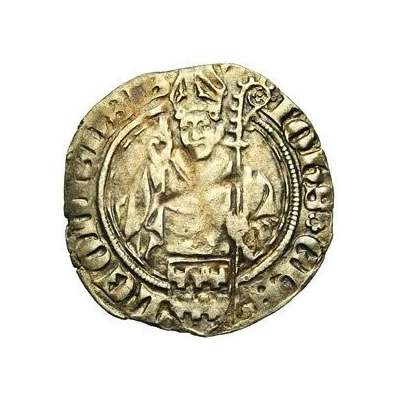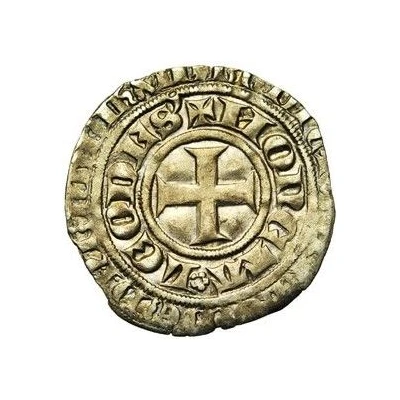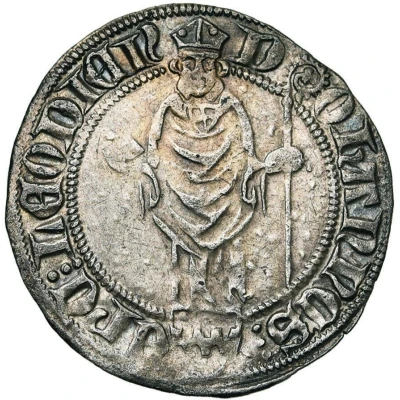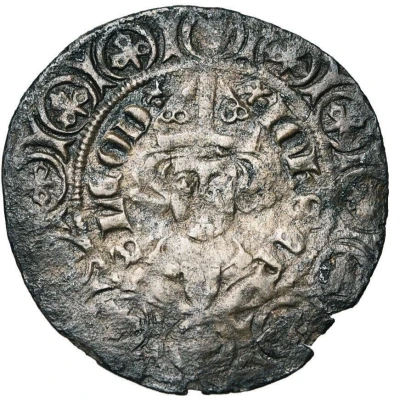
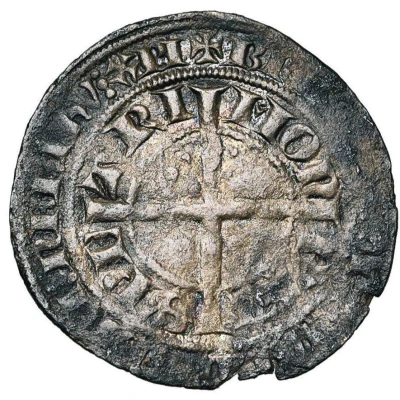

© Jean Elsen & ses Fils s.a.
Groat - John of Arkel Bust, Maastricht ND
| Silver (.900) | 1.65 g | - |
| Issuer | Prince-bishopric of Liege (Belgian States) |
|---|---|
| Prince-bishop | John of Arkel (1364-1378) |
| Type | Standard circulation coin |
| Years | 1364-1378 |
| Value | 1 Groat |
| Currency | Gros (1274-1456) |
| Composition | Silver (.900) |
| Weight | 1.65 g |
| Shape | Round (irregular) |
| Technique | Hammered |
| Orientation | Medal alignment ↑↑ |
| Demonetized | Yes |
| Updated | 2024-10-04 |
| Numista | N#410988 |
|---|---|
| Rarity index | 100% |
Reverse
Cross pattée dividing the interior legend, a dot under the vertical arms of cross.
Script: Latin (uncial)
Lettering:
✠ BNDICTV : SIT : NOME : DNI : NRI : IHV : XPI
MONETA S' PETRI
Lettering (regular font):
✠ BNDICTV : SIT : NOME : DNI : NRI : IHV : XPI
MONETA S' PETRI
Unabridged legend:
Benedictu sit nome Domini Nostri Iehesu Christi
Moneta Santus Petrus
Translation:
Blessed be the name of Our Lord Jesus Christ
Coinage of Saint Peter (of Maastricht)
Interesting fact
One interesting fact about this coin is that it was minted during a time of great turmoil in the Prince-bishopric of Liege, which was a small state in what is now Belgium. The coin was issued by John of Arkel, who was the Prince-bishop of Liege from 1364 to 1378. During his reign, the Prince-bishopric faced numerous challenges, including conflicts with neighboring states and the Black Death, which had a significant impact on the region's population and economy. Despite these challenges, the coin remains a testament to the resilience and resourcefulness of the people of Liege during this time period.
